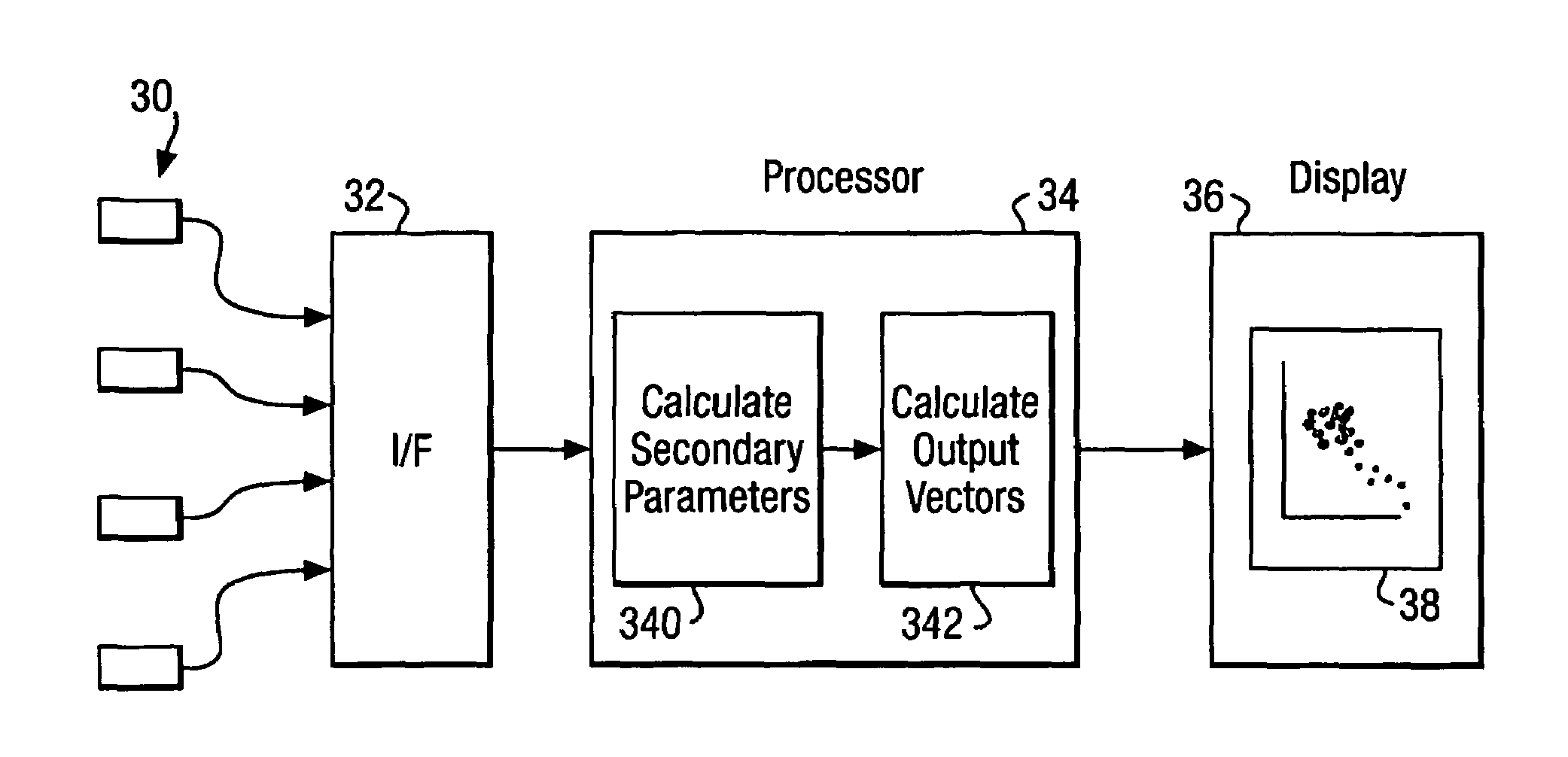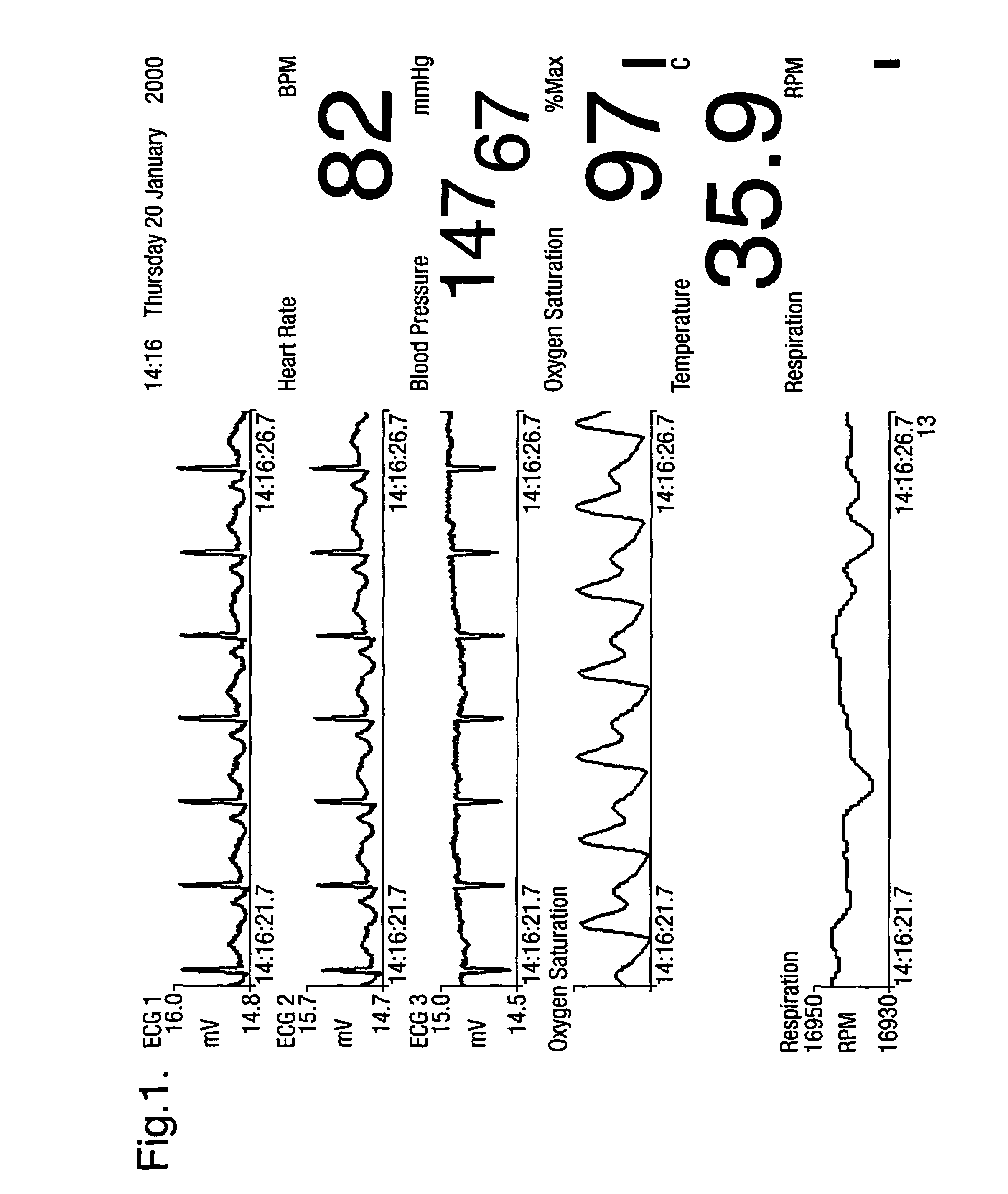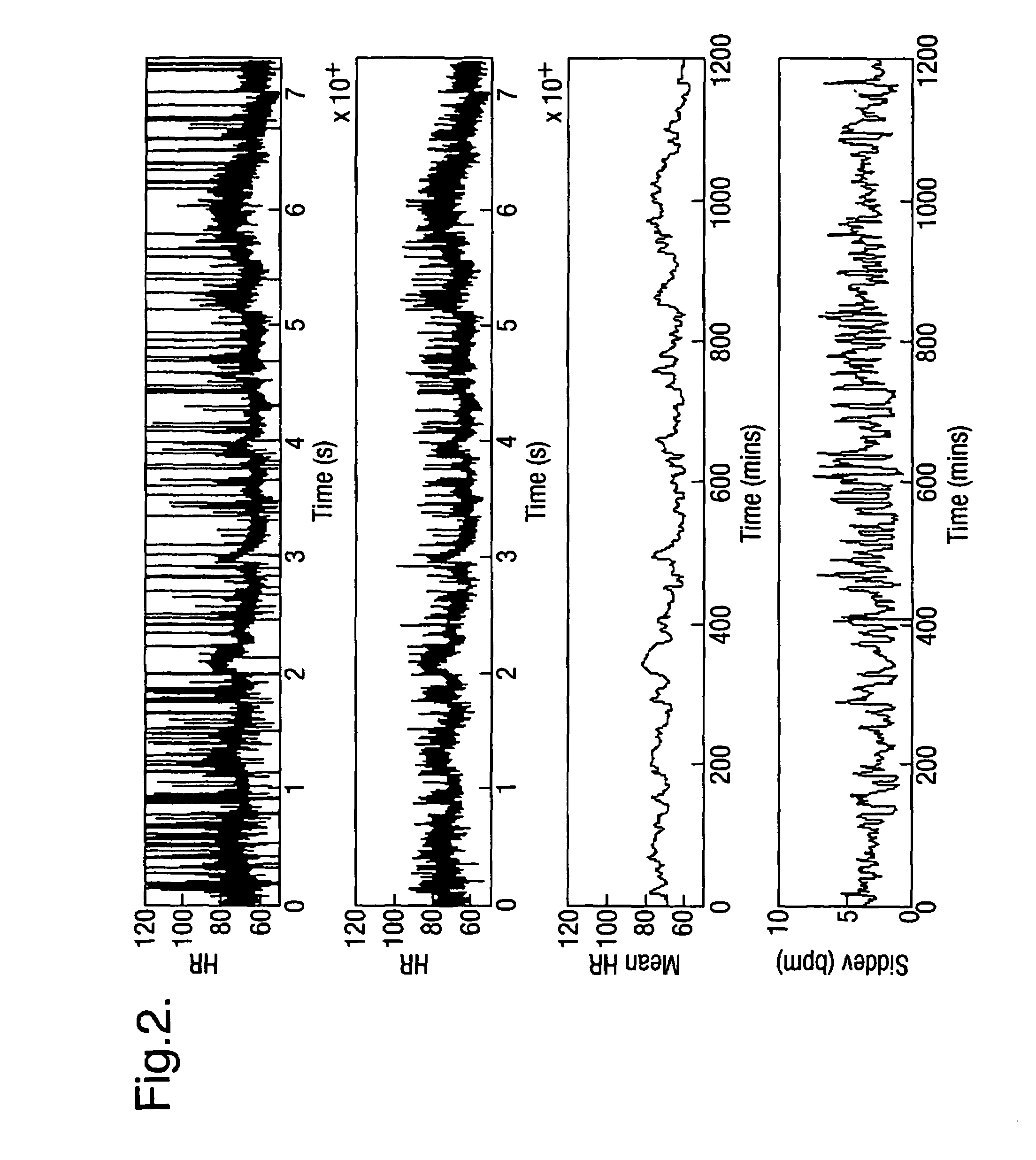Patient condition display
a patient condition and display technology, applied in the field of patient condition display, can solve the problems of difficult to see at a glance whether the patient's condition is normal, difficult to provide a satisfactory solution, etc., and achieve the effects of reducing blood pressure, reducing heart rate, and early detection of deterioration in the patient's condition
- Summary
- Abstract
- Description
- Claims
- Application Information
AI Technical Summary
Benefits of technology
Problems solved by technology
Method used
Image
Examples
Embodiment Construction
[0040]FIG. 1 illustrates the graphical display from an integrated patient condition monitor. As can then be seen, three channels of ECG, ECG 1, 2 and 3, are shown, together with the oxygen saturation waveform and the respiration waveform. In addition, the values for the non-invasive blood pressure, oxygen saturation waveform and temperature are also shown, together with a measurement of the heart rate, which may be derived from the ECG, the oxygen saturation waveform, or a combination of them. These measurements may be supplemented by other measurements relevant to particular groups of patients. It is known, for instance, that for some group of patients the heart rate variability is an important measurement of patient condition. FIG. 2 illustrates two traces for the heart rate: (i) the raw heart rate, including the sharp spikes associated with the occurrence of ectopic beats, (ii) the filtered heart rate (after the ectopic beats have been removed), a five minute mean heart rate, and...
PUM
 Login to View More
Login to View More Abstract
Description
Claims
Application Information
 Login to View More
Login to View More - R&D
- Intellectual Property
- Life Sciences
- Materials
- Tech Scout
- Unparalleled Data Quality
- Higher Quality Content
- 60% Fewer Hallucinations
Browse by: Latest US Patents, China's latest patents, Technical Efficacy Thesaurus, Application Domain, Technology Topic, Popular Technical Reports.
© 2025 PatSnap. All rights reserved.Legal|Privacy policy|Modern Slavery Act Transparency Statement|Sitemap|About US| Contact US: help@patsnap.com



